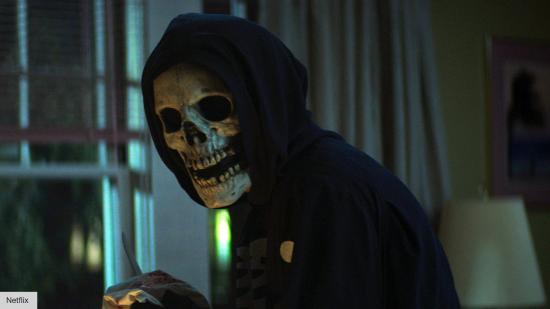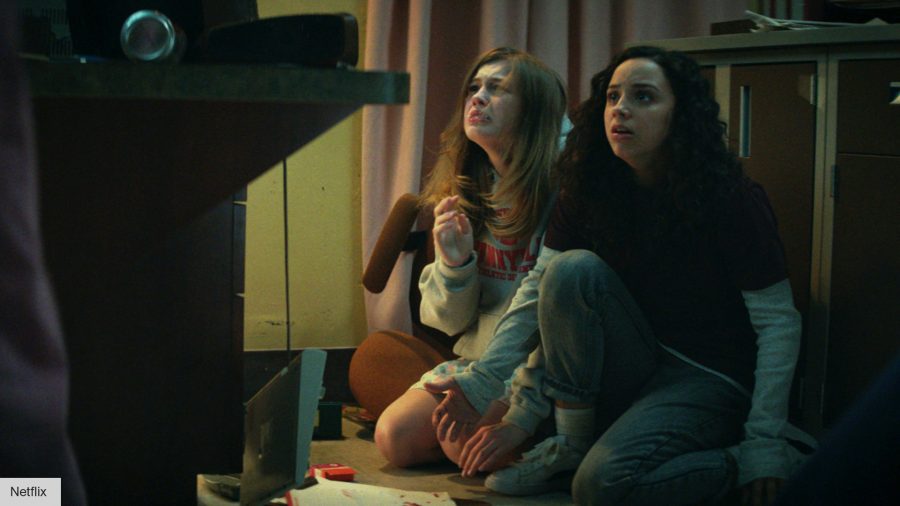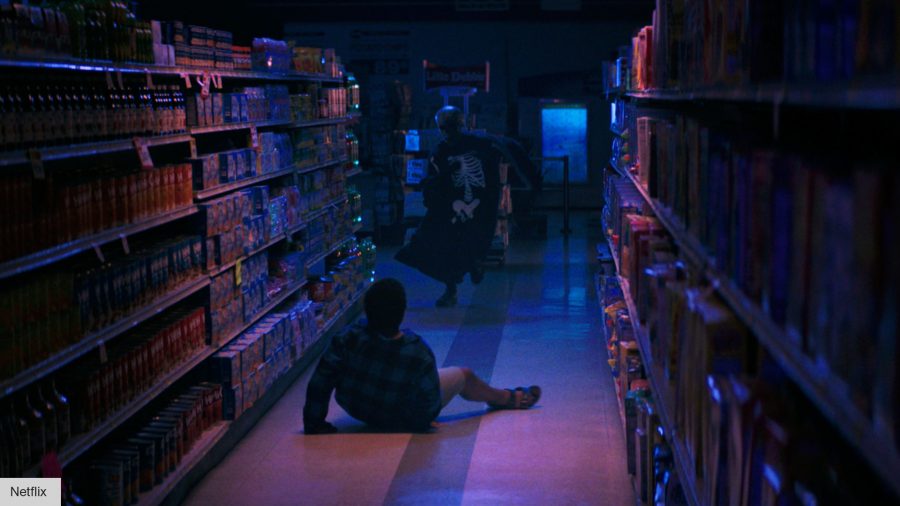Our Verdict
Genre-savvy teen slasher that's got enough blood, but outstays its welcome.
It’s generally a good sign when something starts with a Nine Inch Nails song. With Reznor and co’s ‘Closer’ booming through a shopping mall at closing time, Fear Street Part One: 1994 sets the scene for bloody murder, kicking off an entertaining slasher that keeps up the chase just a tad too long.
Based on the books by R.L. Stine, Fear Street is a horror movie trilogy from Netflix about a group of friends being hunted by reincarnated serial killers. Everyone thinks it’s just more of the same for Shadyside, a deadbeat town with skyrocketing crime, until an internet-obsessed expert points out a pattern that leads to a curse.
You’ve got Heather (Maya Hawke) and Deena (Kiana Madeira), former lovers whose melodrama is at the centre, then Kate (Julia Rehwald) and Simon (Fred Hechinger), who are dealing prescription to try and buy a new life, and Josh (Benjamin Flores Jr.), the geek whose chatroom exploits prove lifesaving. They’re each, in their own way, just the right mix of likable and obnoxious for you to root for them and still be OK with their likely demise.

Sure enough, death is always looming. A brawl at an inter-town football game becomes a car chase that leaves two in a wreck. Skeleton-costumed fiends start appearing outside people’s houses, and a trip to the local hospital goes all sorts of pear-shaped. At every turn, teen angst fills the air: overblown arguments, awkward silences, the occasional longing stare. Sometimes the blade-wielding maniac brings reprieve with their unending terror.
Jovial cuts keep the mood light – one particular transition from a sudden right hook is positively gleeful, director Leigh Janiak picking the right moments to be clever. Fear Street 1994 is steeped in the comedy of small town adolescence. Kate uses the kids she babysits to sort drugs for her, while Simon wears his bloodstained t-shirt to work because he’d nothing else to wear. Deena and Josh are, like any siblings, perpetually arguing about something or other, usually Josh’s perpetual internet usage and tendency to make his heavy metal soundtrack everyone else’s playlist.
If you go into the woods today: Best adventure movies
Nobody likes it here and everything sucks, however, their rivals, a middle-class suburban utopia where nothing ever goes wrong, must be defeated. Shadyside is a deadbeat place to grow up, but it’s also the underdog, and these kids will defend it. Or at least, they’ll defend their existence within it. Heather and Deena broke it off in part because of homophobic family-members and townspeople.
Hawke and Madeira’s performances as kids desperately in love at the wrong place and the wrong time is the emotional guiding light. You shouldn’t get attached to anyone in a slasher, but their closeness makes maintaining that distance difficult. Tender intimacy is helped by lighting that often seems borrowed straight from teen drama Riverdale, all moody, mysterious, and tailor-made for intimacy.
Brains: The best zombie movies
Though it becomes more prominent, their love story does feel drowned out by the grandiose murder-spree of it all. Multiple killers are brought in, and multiple methods to try to stop the evil are employed, and watching the creatures regenerate after a failed explosion makes Fear Street feel like an edited down miniseries. Unhelpfully there’s several endings, ensuring we know exactly what’s happening for Fear Street Part Two.
The adults are kept firmly out of the picture, save some unhelpful cops, the kids more or less flip off, and most of our time with the gang is seeing them in their natural states. They blare noise rock while playing videogames, and have to do laundry, or whatever other mundane thing. When the monsters start calling, they think it’s the neighbouring town being bullies, but, of course, the call is coming from inside the house – or in this case, Shadyside forest.
Such homegrown misery adds to the ample use of ’90s alternative music. On occasion, a period’s cultural mores can be over-romanticised, but White Zombie and Pixies are spot on for necessary outlets. I’ve a feeling this film will be serving the same purpose for others.


